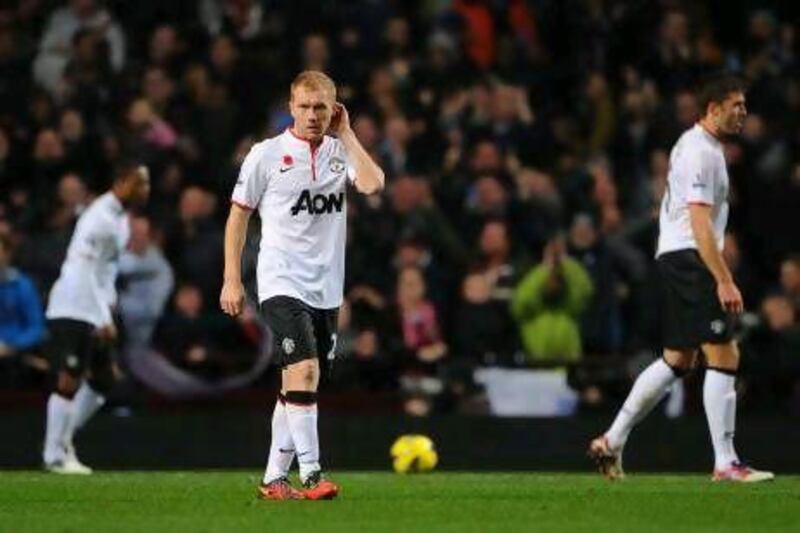When Paul Scholes came out of retirement midway through last season, it was one of the great moments of 2011/12.
The timing of the announcement, hours before an FA Cup third-round tie at rivals Manchester City, only added to the drama as possibly the most naturally gifted English midfielder of his generation put his boots back on.
United won a thriller 3-2, with Scholes coming on as a second-half substitute. He subsequently helped lead Sir Alex Ferguson's side to within a whisker - or three goals - of winning the Premier League title again.
His performances in just 21 games were enough to earn him third place in the English Football Writers' Player of the Year list, behind Robin van Persie and Wayne Rooney.
The majority of those same football writers probably didn't think Scholes was capable of being United's driving force at the age of 37. Or 38, come Friday. After all, the signs of his decline had been visible for several years, with whispers of retirement since Scholes turned 34.
He can't tackle and pace has never been an important attribute for him, but he had lost a yard of it from his peak years. However, the risk to United's defence of playing him in a two-man centre-midfield was counterbalanced by his passing, his vision and his ability to slip into scoring positions in the penalty box.
Alongside Roy Keane, with David Beckham and Ryan Giggs in United's famous treble-winning midfield, Scholes was brilliant, especially with Keane mopping up behind him.
But United haven't found a replacement for Keane and in their current midfield, with the equally pedestrian Michael Carrick a virtual ever-present, Scholes's defensive weakness is starting to become a liability.
Last season, Ferguson often played a 4-5-1 formation to take the pressure off Scholes, but the addition of Van Persie for the current campaign has seen United revert to their classic 4-4-2 formation, with two wingers and two forwards.
Even with Rooney dropping back into midfield, 4-4-2 is no longer made for Scholes.
Two games this season highlight that. The first was the 3-2 home defeat to Tottenham Hotspur when the Spurs goals came through gaping gaps in the midfield left by Scholes and fellow veteran Giggs. The other was Saturday's 3-2 comeback win at Aston Villa, in which a usually average home side took advantage of the midfield space allowed by Scholes, who seemed to play at walking pace, and Carrick.
The flip side of his inclusion in the starting XI: the sumptuous through ball to Javier Hernandez for the goal that made it 2-1 and sparked United's comeback. It was a world-class moment. What Ferguson needs to decide is whether those flickers of creative magic are more important than defensive stability.
Follow us
[ @SprtNationalUAE ]





